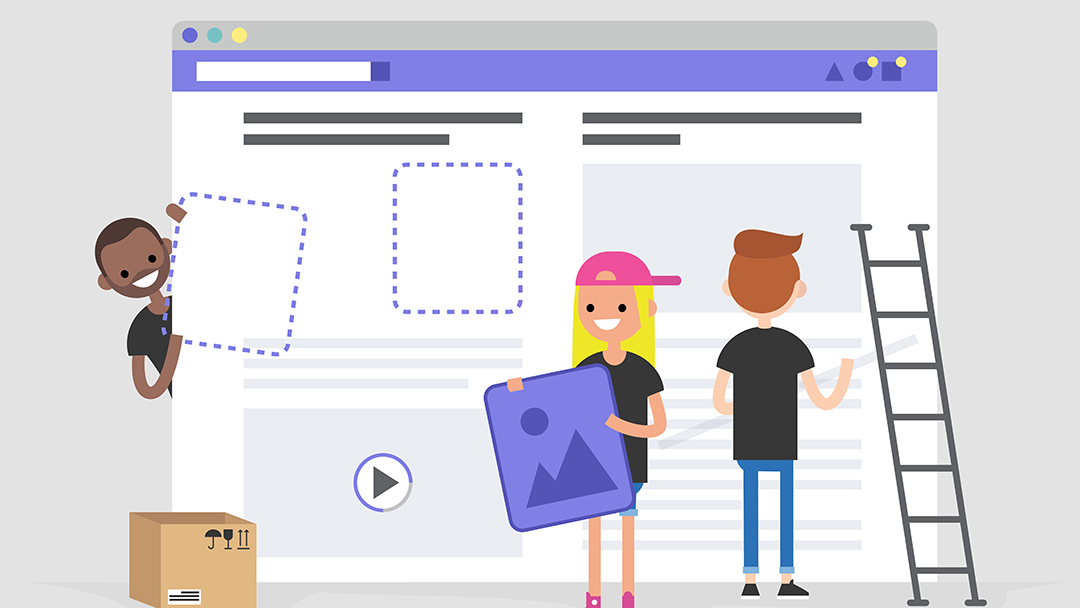7 Examples of Highly-Converting Lead Forms
Picture this: You've spent hours working on that piece of advanced content or perfect set of lead nurturing emails, created a beautiful CTA, and...
5 min read
![]() Guest Blogger
:
February 01, 2018
Guest Blogger
:
February 01, 2018
Landing pages are very important to your lead generation strategy. This is why a lot of marketers and business owners spend their time driving traffic to their web pages, hoping that it will convert. On average, a good landing page will convert between 1 percent and 3 percent. However, some companies convert in the double digits.
A good example is a Moz landing page. A single landing page on their website generates $1,000,000 per year.

Even if your landing page is not generating such huge amounts of money, a high converting landing page is the foundation of a successful business online. With the right marketing strategy, you can increase your conversion rate by 134 percent or more.
Below are five tips you can use to increase your landing page conversion.
A landing page is a single-page on your website where you send visitors to convert them into leads and customers. It contains a call to action and messages to entice your audience to take a specific action such as to download a relevant e-book or other resources, to sign up for a free trial, to join a mailing list, etc. For most businesses and organizations, landing pages are a highly-effective lead generation strategy. However, not every landing page is going to be instantly successful right out of the gate.
One of the contributing factors to a landing page conversion is user engagement. Your landing page should engage users to the point of converting them. One of the ways you can engage users on your landing page is by adding videos. Including video on your landing page can increase conversions by 80 percent.
Video allows you to share an engaging brand story and build trust. It makes users linger on your page longer, thereby giving them time to process the brand information and, ultimately, reducing your bounce rate.
You can take it further by using interactive content such as quizzes, games, contests, e-books, and infographics. A lot of successful brands are using landing pages as a way to engage their users. For instance, if your company is selling cars, you can create a landing page with interactive content that allows users to change the color of the interior of the car to what they like. If you sell clothing, you can create a landing page with a model whose dress, shoes, and accessories can be changed.
A good example is this bills.com landing page. It is interactive and encourages engagement. They start by asking web visitors three questions before they see the form.

Only after you've answered the first question are you shown the next two questions.

When you answer all three questions, then you are shown the form where you can fill in your details.

This is engaging and enticing at the same time. Visitors would want to know whether they are qualified or not. This will greatly increase the conversion of the landing page.
A call to action button or link helps you convert visitors to subscribers, leads, or customers. An effective call to action button is simple, clear, and clickable. It should attract your users and entice them to take the required action.
There are four specific elements of a call to action button that are very important to your success. They are:
The color: The color of your CTA button should contrast with the background of your landing page. Usually, an orange, blue, or green CTA are effective.
Size: The size of the call to action button also matters. It should not be too small so that users overlook it, nor too big to the extent that it will scare away users. It should be the right size and fit in with the landing page layout.
Location: The position of the call to action button on your landing page matters a lot. It should be prominently displayed where users can see it. Don't hide it in a corner or under an object that will make it look obscure. Let your users notice it immediately when they land on the page by displaying it in the right place.
Content: The message on the call to action button also matters a lot. It should entice your audience to click it. It should relate to what you are offering your users. Don't use "submit" as it sounds scary because people don't like giving away their details easily.
Take a look at the landing page below: The content of the CTA says, "Sign up for free." This takes the pressure off the website visitors. They don't have to pay immediately for the service and they won't be charged if they don't like it. It is subtle and inviting.

Images are very important on your landing page. As the famous quote says, "A picture is worth a thousand words." Landing pages that will convert must have relevant pictures. According to Hubspot, 80 percent of people remember what they see and do.

Not only that, humans respond to images faster than text messages. This is why website visitors spend more time on pages that have images. When creating an image for your landing page, make sure that it shows the relevance to your business and your customers.
For instance, Airbnb is a company that focuses on people who need a place to stay outside their location, so it is essential they show the faces of their customers or hosts. The landing page below shows an Airbnb host welcoming travelers to her home.

The landing page form is another significant element of a converting landing page. There are two different kinds of forms you can use on your page — short and long forms. Your landing page should not be too long so as not to discourage your users from filling it. It should not be too short either in order to collect relevant details for your business.
However, shorter forms tend to perform better than longer ones. This is validated in a test carried out by Marketingexperiments.com. They tested three forms with nine, seven and five fields. And the shortest form outperformed the rest.

When creating your form, make sure you ask only for the relevant details that are specific to what you are offering.
Check out this short and simple landing page below from Zendesk:

Measuring your landing page performance is very important for knowing whether or not your website visitors are converting. A good tool for measuring page performance is the free Google Analytics. It will help you measure how many people came to your landing page and converted by giving you their details. The following are performance criteria that will help you know how your landing page is converting:
The bounce rate: The bounce rate is the number of web visitors who came to your landing page and did not convert. If this number is high, it means you are not using the right keyword to attract the right audience to your business. It could also mean that the landing page design is not good.
Time on the page: You need to know the duration of a visitor on your website. How long did they stay? Where else did they visit while on your website?
Traffic source: Knowing where your website visitors are coming from will enable you to create an effective landing page for the platform. This could be social media networks, search engines, etc.
The sole purpose or goal of creating a landing page is to convert visitors into leads and customers. This is why you need to do all you can — investing your time, skill, money and resources — to create landing pages that will convert. This blog is a good start but your work's not done.
What strategies are you using to make your landing page convert better? Share with us in the comment section below.
 Stefan Des is a Social Advertising and Marketing Automation enthusiast and the CEO and co-founder at LeadsBridge, a suite of automation tools for Facebook Advertisers.
Stefan Des is a Social Advertising and Marketing Automation enthusiast and the CEO and co-founder at LeadsBridge, a suite of automation tools for Facebook Advertisers.

Picture this: You've spent hours working on that piece of advanced content or perfect set of lead nurturing emails, created a beautiful CTA, and...
![Double Your Online Leads Without Re-designing Your Website [WEBINAR]](https://www.clubmarketing.com/hubfs/AdobeStock_283780955.jpeg)
Private Club Website Challenges If you’re among the few private clubs today who have a waiting list from now until eternity and attracting new...

Private clubs pride themselves on being the best when it comes to customer service and community. But there's one way that you might be failing to...